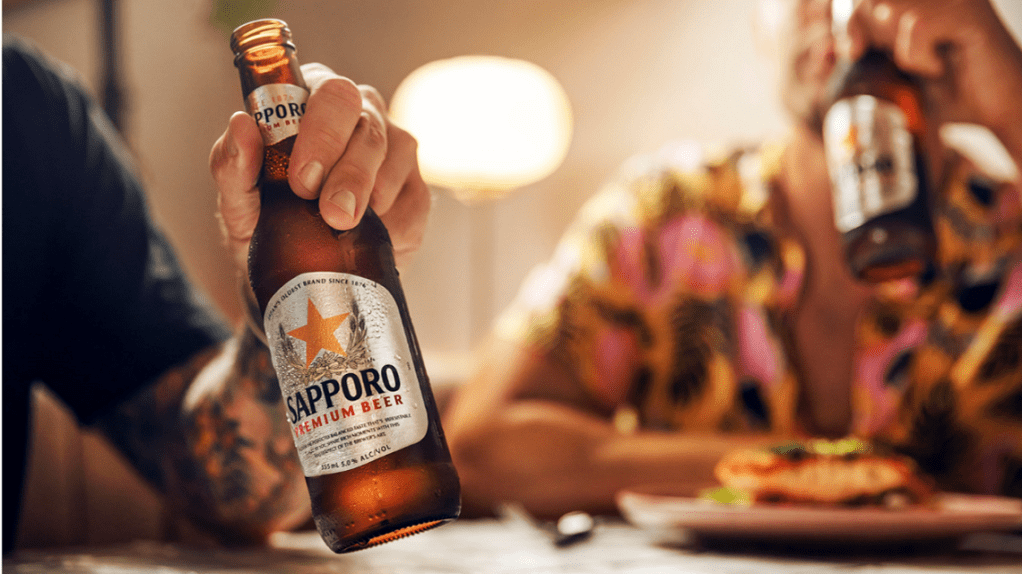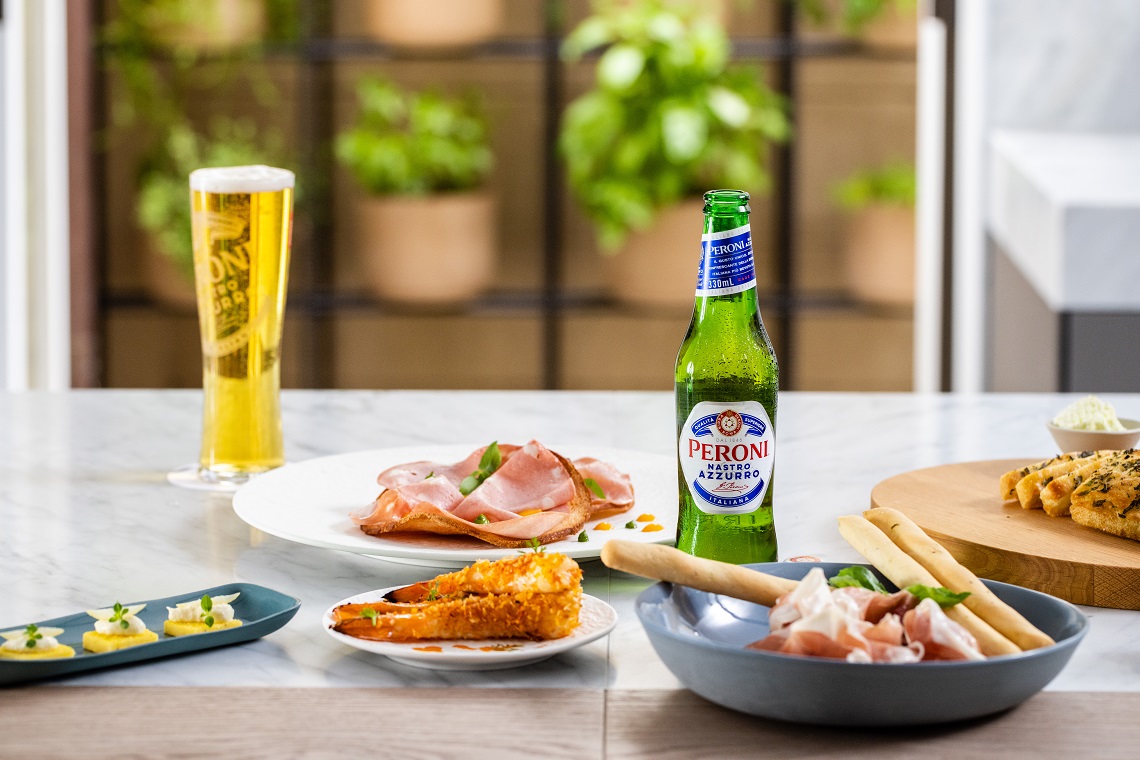After two years of travel disruption, borders have reopened and Australians are slowly beginning to return to the piazzas of Europe, the dive-bars of America and the beach clubs of Asia.
It is within these venues that overseas travellers have forged the memories that keep them returning to imported and international beers, long after they have touched back down in Australia.
During the pandemic years, and with continuing reticence among would-be travellers, imported beers have had a crucial role to play. For many drinkers, these beers have represented a form of ‘safe escapism’ for Aussies eager to connect with memories their
previous voyages.
Imported beer, important beer
This shared experience is something that Brenton Quirini, Owner and Managing Director of international beer specialist distributor, Empire Liquor, has highlighted.
“Imported beers are still as important as ever, especially as Australians are longing to relive their last overseas visit and good times in a beer hall, ancient English pub or Belgian town square,” Quirini says.
His sentiments are echoed by Richard Kelsey, Co-founder and Director of leading e-commerce beer retailer, Beer Cartel.
“We’re seeing the growth among traditional Belgian and German breweries. These are largely based around brands and styles people have previously experienced in Australia or overseas that they’re seeking out again,” he said.
“COVID and the inability to travel overseas may have had some impact on increased demand for these beers, providing a window to places people couldn’t travel to.”
In terms of beer marketing, this tactic is nothing new. Corona’s famous ‘From Where You’d Rather Be’ campaign lives long in the memory, and continues to be referenced by the brand’s importer, Carlton and United Breweries (CUB).
Kym Bonollo, Head of International Brands for CUB, believes the company’s broad range of international beers leaves it well-placed to capitalise on the desire for escapism among drinkers.
“Our international portfolio allows consumers the opportunity to experience a taste of escapism, whether it be Japanese discovery through Asahi Super Dry, the Italian lifestyle through Peroni or the beaches of Mexico with Corona,” Bonnollo said.
Yet there’s more to this phenomenon than pure emotion – Quirini and Kelsey’s observations are borne out in the statistics. According to analysis shared with National Liquor News by CUB, imported beer continues to account for one in every six dollars spent on all beer in Australia, contributing some $1.1 billion in retail sales per annum.
And Cam Pearce, Director of Marketing and Innovation for Coopers, which imports brands like Carlsberg, Sapporo and Yebisu, says the closure of travel helped produce strong growth for these brands.
“During 2020 and 2021, at a time when international travel was halted, Sapporo experienced double-digit sales growth, and rose to become one of the fastest growing premium international beer brands in Australia,” Pearce said.

The craft beer challenge
There’s no doubt that the recent explosion in craft beer means that there are more home-grown products for Aussie consumers to enjoy than ever before, and this has had an impact on the popularity of certain imported beers.
“We previously had a big focus on hop-forward beers from the USA, [but] as we’ve seen the quality of comparable beers produced in Australia increase, we’ve seen a huge slowing down in this space,” Kelsey says.
One brand hoping to buck this trend is Voodoo Ranger IPA, produced by American brewery New Belgium Brewing, and imported to Australia by Lion. New Belgium itself began after its founders took a bicycle tour of Belgian breweries.
Lion’s Brand Ambassador for Voodoo Ranger, Johnny Day, believes that the beer’s strong performance in the United States will translate to sales in Australia.
“Voodoo’s focus on big flavourful IPAs has seen great success in the US, placing it as the number one IPA,” says Day.
So far, Day has been proven correct, with the 6.8 per cent ABV Voodoo Ranger clearing the 200,000 litre mark for Australian sales earlier in the year.
Lion Little World Beverages (Lion’s global craft arm) acquired New Belgium Brewing in 2019, and followed this purchase by picking up Bell’s Brewery, based in Michigan.
According to Day, “the combination of Bell’s and New Belgium places the expanded company at the top of the US craft beer market in sales volume and growth, with an extraordinary line up of brands including Voodoo Ranger, along with Fat Tire, Two Hearted Ale, and Oberon Ale.”
“Given how difficult international travel has been in recent times, trying beers from some of America’s most famous craft breweries is a fantastic way to stay in touch with beer trends around the world.”
A taste of tradition
Nevertheless, there are certain traditional overseas beer varieties and brands that continue to resonate strongly with Australian drinkers. In some cases, similar products made in Australia prove less popular than their overseas counterparts.
“When the traditional European styles are produced locally, even when they are well made, the demand is significantly lower,” Kelsey says.
Bonollo believes this is down to the narratives that certain brands possess.
“We think that the defining point of difference for international beers are the stories around those brands, their overseas provenance, commitment to quality and history adds a degree of romance and appeal that builds in premium value,” Bonnollo said.
“These stories give the shopper/consumer a taste of distant and diverse cultures, a sense of discovery that you would get from travelling to those destinations and experiencing it all firsthand.”
For Quirini, “the unique qualities of many imports, including trappist, wheat, pils, stouts and ales are not easy to replicate.”
This difficulty in replication is not just down to the particular ambience of the pub in which drinkers first sampled the beer, as Quirini explained. It’s a result of “many factors including but not limited to, yeast strains, raw ingredients, equipment and in many cases generations of history and experience.”
In particular, Kelsey points to the increasing popularity of traditional Belgian and German styles including hefeweizens, helles or pale lagers, pilsners, dark lagers, strong Belgian ales and trappist style tripels.
“These traditional styles have had their beer recipes honed over decades, and in some cases, centuries,” Kelsey adds.
Traditional imported beer is an area where retailers can have an edge over the on-premise, as venues are less likely to have such offerings – particularly in bulk keg format.
Read the rest of this feature, including the top style of international beer and tips from brands on getting the most of the segment, in the May issue of National Liquor News.

